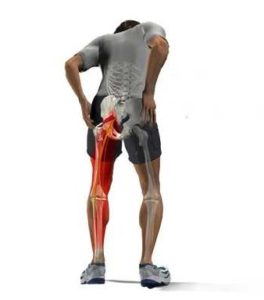 As a Denver chiropractor, many people step into my treatment room seeking help from their neck or back pain. Most patients have several thoughts on their mind when they enter the clinic. The primary question being; Can you help me? That being the most important, other questions such as; why they have this pain, how can I avoid this from returning, how long will it take for the pain to go away, and how much will this cost are the usual and most typical.
As a Denver chiropractor, many people step into my treatment room seeking help from their neck or back pain. Most patients have several thoughts on their mind when they enter the clinic. The primary question being; Can you help me? That being the most important, other questions such as; why they have this pain, how can I avoid this from returning, how long will it take for the pain to go away, and how much will this cost are the usual and most typical.
Although there are many causes for neck and back pain, this post will revolve around the infamous disc / disk herniation. Disc herniation treatment is an art due to it causing a considerable amount pain and brings about the question; What is the best way to manage a disc herniation?
First, a disc herniation will cause dermatomal radiculopathy. Meaning that pain will be in typical locations on the body. I must say that if you are experiencing pain that radiates that you should see your doctor of chiropractic ASAP.
You should goto the emergency room if you have: cauda equina syndrome, epidural abscess, or severe and progressive neuromotor deficits.
A review of the literature key points include: (from October 1 issue of American Family Physician)
1. If red-flag findings are absent, a patient with sciatica should try conservative management for up to 6 weeks before obtaining imaging studies and considering surgical approaches (evidence rating, A).
2. Patients should be advised to stay active (evidence rating, A).
3. Nonsteroidal anti-inflammatory drugs, acetaminophen, and muscle relaxants may be effective for nonspecific low back pain but have not been extensively studied with lumbar disk herniation pain (evidence rating, B).
4. Systemic steroids are no better than placebo in the treatment of lumbar disk herniation pain (evidence rating, A).
5. If symptoms persist after 6 weeks, or if there is worsening neurologic function, imaging studies and invasive procedures may be considered.
6. Computed tomography and magnetic resonance imaging provide similar sensitivity and specificity for lumbar disk herniation, although magnetic resonance imaging provides a more detailed evaluation of the nerve roots and soft tissues of the spine.
7. Most patients with lumbar disk herniations improve after 6 weeks.
8. Because there is no difference in outcomes between surgical and conservative treatment after 2 years, patient preference and the severity of the disability from pain should be considered when treatment modalities are chosen.
9. Invasive nonsurgical treatments involve steroid injections into the epidural space or herniated disk. 10. Epidural steroid injections for acute lumbar disk herniation may modestly improve pain in the short-term but do not affect long-term outcomes (evidence rating, A).
11. The indications for emergent surgical intervention for sciatica include cauda equina syndrome, epidural abscess, or severe and progressive neuromotor deficits.
12. Selected patients with lumbar disk herniation pain that is not improved after 6 weeks of conservative management may benefit from diskectomy for faster clinical relief (evidence rating, A).
13. Compared with surgical diskectomy, microdiskectomy, which involves disk removal with the aid of a surgical microscope, has similar surgical outcomes.
14. Diskectomy has similar long-term outcomes as conservative or nonsurgical management (evidence rating, A).
As noted from the Journal of American Family Physician, conservative therapy should be tried before imaging. The chiropractor is one of your best choices for conservative management of the disc herniation.
To Your Health,
Dr. Trent Artichoker MS, DC
Denver Chiropractic, LLC
3890 Federal Blvd Unit 1
Denver, CO 80211
303-455-2225

